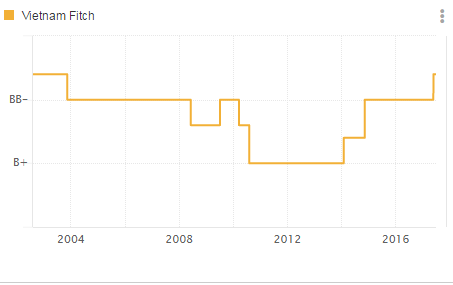NCIF has forecasted that Vietnam's GDP growth rate will reach about 7% per year in the period of 2021-2025; macroeconomy will experience stability; inflation will remain at 3.5-4.5% per year, labor productivity is going to be improved with an annual growth rate of about 6.3%; GDP per capita will reach about USD 4,688 by 2025...
Positive growth
The seminar on Vietnam Economic Prospects for the period of 2021 - 2015: Opportunities and challenges from Free Trade Agreements (FTAs) held by the National Center for Socio-Economic Information and Forecast (NCIF), Ministry of Planning and Investment in collaboration with the Irish Embassy in Vietnam on the morning of November 21 forecasted a positive growth of 7% for the coming period.
NCIF's research shows that the participation in new-generation free trade agreements, especially the CPTPP and EVFTA, will have a profound and wide impact on Vietnam's economy in the period of 2021- 2025.
In this period, Vietnam's economy is forecasted to have many advantages and difficulties intertwined. The Industry Revolution 4.0 is widespread, and being a part of new-generation FTAs such as CPTPP and EVFTA is expected to bring many economic development opportunities to Vietnam through export expansion, investment and application of science and technology.
Both CPTPP and EVFTA have relatively more areas of commitment than other FTAs, not only in the field of exchange, import and export but also in the way goods are produced. These 2 FTAs help increase the volume of investment in order to boost exports to partners' markets, and increase investment in upstream sectors in order to exploit the commitment of origin ratios, thereby improving the supply chain of Vietnam.
Ms. Tran Thi Hong Minh, Director of NCIF, said: “EVFTA is expected to have a greater impact than the CPTPP, because many members of CPTPP have already been partners of Vietnam in other FTAs. All in all, EVFTA and CPTPP can help Vietnam's GDP increase by 4.3% and 1.3%, respectively by 2030. Vietnam's export turnover to the EU by 2030 is expected to increase by another 44, 4%; exports to CPTPP countries by 2035 will increase by 14.3%.
In addition, these agreements also have a positive impact on labor, in which labor-intensive industries such as textiles and footwear are forecast to be most beneficial. In addition, the positive impact from these agreements may come from creating pressure to improve institutions and business environment, generating positive effects in the medium and long term.
“Vietnam's GDP growth rate will reach about 7%/ year in the period of 2021-2025. Macroeconomy will be stable. Inflation will remain at 3.5-4.5% per year. Labor productivity is going to be improved with an annual growth rate of about 6.3%. With such results, by 2025, Vietnam's GDP per capita will be about USD 4,688, putting Vietnam in the list of high-middle-income countries” forecast by NCIF.
If Vietnam knows how to take advantage of technology from the Industrial Revolution 4.0, investment’s quality is improved, and current economic base is well-developed, it is expected that GDP will grow by 7.5%/year. In this period, economic growth is forecasted to depend on the construction industry and the service sector, in which manufacturing industry and wholesale & retail are the main drivers.
Professor John FitzGeral from Trinity Dublin University (Ireland) made an optimistic assessment of Vietnam's economic growth. "2019 marked the 11th time that I’ve been to Vietnam. The traffic in Hanoi and Ho Chi Minh City is more congested than ever before, somewhat showing a picture of economic and social growth in Vietnam.”
However, “In the coming period, the economy is under great pressure to improve the efficiency of contribution of high value-added services, to boost exports while increasing the domestic content in exports, to increase the number of domestic enterprises, especially SMEs, participating in the global value chain, and to improve the quality of life for people", stressed by Professor John FitzGeral.
Challenges
In addition, NCIF experts also advise that, if Vietnam does not make investment breakthroughs, it will be difficult to go beyond the current scale to reach a higher level of growth. In the period 2016-2020, growth is still largely dependent on capital (the ratio of investment capital / GDP remained high, an average of 33.5%), while the contribution of capital factor to economic growth still accounts for a large proportion (over 55%), clearly showing the great challenges of growth model innovation.
Dr. Dang Duc Anh, Deputy Director of NCIF, noted that during the recent development period, Vietnam has shifted quite quickly from agriculture to industry, but still only focuses on processing. On the surface, the movement is clear, however, it has not yet been proportional to the quality. The contribution of high value-added services is still low, and logistics costs remain high. Exports still depend on commodities manufactured by FDI enterprises. Export turnover has increased but the domestic content in exports has not increased correspondingly, and Vietnam is still way behind other countries in the region.
Source: Baodautu























































